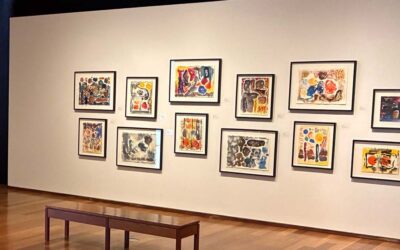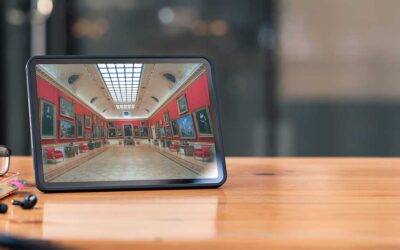What to Look for in an Off-the-Shelf Museum CMS

Rachael Cristine Woody
When selecting a museum CMS, we want to make sure it addresses collection needs and has tools that make our jobs easier. For museums where an off-the-shelf CMS makes sense, there are a few factors to consider in order to be sure the off-the-shelf option selected is the right one.
For more information on how to determine if an off-the-shelf museum CMS makes sense for you, please see my previous post: Off-the-Shelf Museum CMS: When to Buy One and Where to Find One. For more on the selection and procurement process, please get your free e-copy of my book: How to Select, Buy, and Use a Museum CMS, courtesy of Lucidea Press.
The Top 5 Things to Look for in an Off-the-Shelf Museum CMS:
- The off-the-shelf CMS is built to be intuitive. If you’re buying an off-the-shelf CMS it’s because you need an easy, affordable product that is intuitive for staff and volunteers to use. Given how important this factor is, it’s the first thing you should look for in an off-the-shelf product.
- The off-the-shelf CMS is easily customizable. Just because you’re buying an off-the-shelf product doesn’t mean you should give up the ability to customize. Many off-the-shelf museum CMS products will support customized workflows, catalog templates, and reports.
- The off-the-shelf CMS can be optimized to fit your needs. Building on the product’s intuitiveness and customization options, you can optimize your off-the-shelf CMS product to work effectively for your unique requirements.
- The off-the-shelf CMS adapts to evolving needs. Look for an off-the-shelf product that is adaptable, whether through tool customization or annual updates. The way we use technology is constantly changing and we need a CMS option that will evolve with us.
- The off-the-shelf CMS comes with training and support. Off-the-shelf doesn’t mean you have to go it alone. While the product may not be made from scratch for you by the vendor, many vendors provide a suite of training and basic support services to make sure you get the product implemented correctly and in a way that works for you.
Just as there’s functionality we need from a good off-the-shelf CMS, there are things we need to be careful of.
The Top 5 Things to Be Wary of With an Off-the-Shelf Museum CMS:
- The off-the-shelf CMS requires advanced technical knowledge to install. This defeats the purpose of it being an off-the-shelf option and is antithetical to our goal.
- There’s no room for customization. While we don’t expect a full range of customization options for an off-the-shelf product, there should still be some customization options available to help use do our jobs better.
- The off-the-shelf CMS isn’t actively improved upon nor supported by the company. This is a red flag as it indicates the product isn’t sustainable: it won’t evolve with use changes and could be abandoned by the company at any time.
- There are no trainings available. While an off-the-shelf product may be so easy to use you don’t necessarily need the training suite, there should still be an offer of training or training documentation to help support museum staff adopting the CMS product.
- There’s no product support. Though the issues you run into with an off-the-shelf product will be minimal, there should still be a way to connect with the company who produced the CMS to receive support when needed.
Conclusion
If you’re shopping for an off-the-shelf CMS, make sure you have this post next to you to double-check whether the CMS meets “must have” items and avoids “things to be wary of”. Please tune in again next week where we’ll wrap up this series with How to Sell an Off-the-Shelf Museum CMS to Your Boss.

Rachael Cristine Woody
Consultant, author, and blogger Rachael Cristine Woody advises on museum strategies, collections management and grant writing for a wide variety of clients. Learn about Lucidea’s Argus solution for unrivaled museum collections management. And register here for Rachael’s next webinar on 9/30/20 where she’ll expand on topics related to buying and using an off-the-shelf CMS.
Similar Posts
From Preservation to Resilience: An Introduction to Building Resilient Digital Collections
Preserving a digital collection is a job that is never done. But what if we shifted our focus from preservation to building digital resilience?
Client Spotlight: MacLaren Art Centre Goes Beyond Collections Care to Access and Growth
“As our needs evolved, it became clear that our existing CMS was no longer working for us. Not only do we need to perform basic collections care, we need a system that will support public access, enable growth, and match our innovative strategies.”
Museum Collections Online: Digital Storytelling Blog Series Roundup
An overview of 10 blog post series that highlight how museums can leverage online collections and digital storytelling platforms, strategies, tools, and best practices.
How Museums Can Broaden Access and Improve Accessibility with Digital Storytelling
Museum expert Rachael Cristine Woody explains how digital storytelling expands access and improves accessibility of museum collections with inclusive multimedia formats.




Leave a Comment
Comments are reviewed and must adhere to our comments policy.
0 Comments